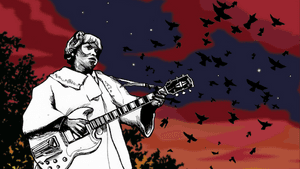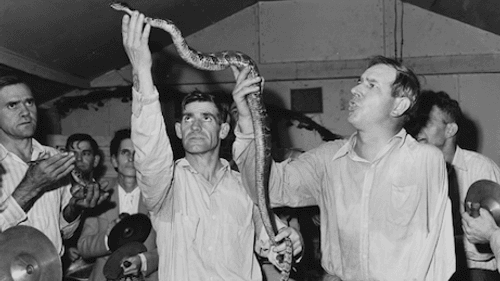Stay in the Loop
BSR publishes on a weekly schedule, with an email newsletter every Wednesday and Thursday morning. There’s no paywall, and subscribing is always free.
The Lord's path to the devil's music
'Devil’s Music, Holy Rollers and Hillbillies,' by James A. Cosby

Go to Amazon and run a search for “rock and roll history.” Go ahead, I’ll wait.
(Slowly hums Big Mama Thornton’s 1953 “Hound Dog”.)
See what you find? Nearly 9,000 results. So the question must be asked: Do we really need another book that purports to tell the history of rock music?
When the book is as thoughtfully written and meticulously footnoted (well over 1,000 citations) as James A. Cosby’s Devil’s Music, Holy Rollers and Hillbillies: How America Gave Birth to Rock and Roll, the answer is a resounding yes.
Where to begin?
Too many rock histories take as their starting point Chuck Berry in the 1950s or the Beatles and the British invasion of the 1960s. Even British music magazine Uncut begins its ambitious year-by-year history of rock series in 1965.
While many music fans can easily and comfortably draw that direct line between Chuck Berry and the Beatles (or the Rolling Stones, for that matter), the next questions follow pretty quickly for anyone of even minimal musical curiosity: where did Chuck Berry come from? Who influenced him? What influenced them?
This is precisely where Cosby’s book comes in.
Seeking answers
Cosby came to Philadelphia from Washington state about 20 years ago to attend Temple University law school. In a recent interview, he recalled, “I had some questions in the back of my mind for a long time about rock music. How could something I loved so much have ever been considered devil's music, as had the blues before it? What was the first rock record and why is that not a well-known fact? What songs existed just before rock and roll? Was Elvis Presley simply a cultural thief, and was he even racist, as has long been rumored?
“I realized that if I had no clue what the answers were to these questions, probably the vast majority of people did not know either.” He continued, “That is amazing to me. I mean, we're talking about arguably the greatest cultural phenomenon of the 20th century. That's kind of bizarre. As I started to research those questions, I got some amazing answers. Then I got more questions, and I just kept digging into it.”
And dig he does. Where a typical volume of rock and roll history might talk generally about how the roots of rock lie in the blues, Cosby goes deeper to provide the cultural and sociological contexts for those blues. Chapter four, titled “Being Black,” takes us back to the mid-1600s as it traces the path of slavery through commerce, religion, politics and music, a path that leads us to emancipation and, as detailed in chapter five, “The Early Blues.”
The star of the book
Along the way, even those of us who have been listening and reading about rock music (and the history of rock music) all our grey-haired lives are likely to find new insights and a few surprises. Cosby certainly did as he was writing this volume.

“The biggest surprise for me,” he explained, “is the role of the Pentecostal church, the ‘holy rollers’ who speak in tongues and such. The story of how modern Pentecostalism came about is amazing. Pentecostal singer Sister Rosetta Tharpe is quite possibly the star of the book. Further, the three wildest, most unhinged early rock performers are, clearly, I think, Jerry Lee Lewis, Little Richard, and Elvis Presley. What do these three all have in common? They were all raised Pentecostal. That is not a coincidence.”
That context is vitally important in understanding the development of rock and roll. Cosby strives to present not just the what and the how, but also the why. He succeeds, taking the reader on a journey that is uniquely American, and is, tragically, is unknown by many Americans.
That journey makes this book a necessary addition to the bookshelves of anyone whose record collection features not just the Folsom Prison Johnny Cash, but also the Sun Records Johnny Cash; not just early country music by Hank Williams, but also music by Jimmie Rodgers and Bob Wills; not just blues legend Robert Johnson, but also blues legends Charley Patton and Son House.
If you want to dig even deeper into any of the specific performers or topics covered by Cosby, he provides an extensive bibliography of books, articles and more. My guess is that, like me, you’ll be reaching for your Amazon credit card before you can say, “Wop bop a loo bop a lop bam boom.
What, When, Where
Devil’s Music, Holy Rollers and Hillbillies: How America Gave Birth to Rock and Roll. By James A. Cosby. McFarland. 264 pages; $35, paperback. Click here.
Sign up for our newsletter
All of the week's new articles, all in one place. Sign up for the free weekly BSR newsletters, and don't miss a conversation.

 Craig Peters
Craig Peters